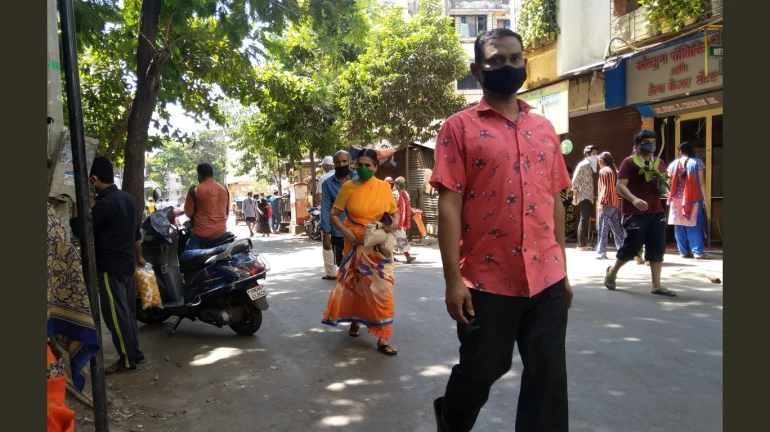
The number of coronavirus cases in Mumbai may witness a rise in the monsoon season, Maharashtra disease surveillance officer Dr Pradip Awate told exclusively to Mumbai Live. The coronavirus has some similarity with the Influenza virus and it is known that the transmission of influenza increases during monsoon, he added.
Dr Awate, who also heads Maharashtra’s epidemiology department, informed that it is not yet known how the coronavirus would behave in changing weather, especially in Mumbai given the rising levels of humidity and rains here during the monsoon season.
“We don’t know how the coronavirus would behave in a changed pattern of weather, especially in Mumbai given the rising levels of humidity and rains here. It has some similarity with the influenza virus and we know that the transmission of influenza increases during monsoon. So, we are expecting some rise in COVID-19 cases during monsoon. However, this is again a prediction. We can’t surely say anything,” Dr Pradip Awate said.
Speaking on the impact of lockdown on COVID-19, Dr Awate stated that the lockdown has reduced the speed of the coronavirus spread and the doubling rate has also increased due to the imposition of the lockdown.
“Having said that, we have to admit that even though the doubling rate has increased there has been a rise in the number of cases as well,” the official said while informing that rise in COVID-19 cases is being reported from the urbanised belt of Maharashtra.
Dr Pradip Awate further said that almost 85-90 per cent COVID-19 cases are from the urbanised belt of Maharashtra including Mumbai, Thane and Pune and the reason for the increase in coronavirus cases is the “peculiar characteristic” of these urban belts which is its huge population density.
“Density is important if you talk about rising cases in urban areas. If you look at the population in Mumbai, there are 20,000 residents per square kilometre while there are 11,000 residents per sq km in Thane followed by 9,000 in Pune,” the official said.
The state disease surveillance officer pointed out that the impact of lockdown in the slums is not what is observed in middle-class societies. Dr Awate further informed that the density is much greater in slums and about 40-50 per cent people in urban areas reside in slums.
Lockdown can’t be strictly followed and is difficult to implement in slums where 8-10 people are residing in a room measuring 8x8 feet, Dr Awate asserted while adding that ‘stay home and stay safe’ is for those who possess bigger homes.
“Naturally, what we want to achieve is hard to achieve in slums because of the density in slums as people are living under poor conditions. Social distancing is also not possible in slums,” the official said.
Speaking on the possibility of community transmission, Dr Awate informed that India was getting a cluster of cases but there was no evidence as of now to support that the community spread has started.
“For us to say that there is a community spread, we need to have 20-30 per cent cases whose link can’t be traced. However, we are not getting COVID-19 cases in that proportion. For now, the WHO is also calling it as a cluster of cases of entire India,” the state health official said.
“You get a cluster of cases in a certain time and geographical frame. In this scenario, the COVID-19 cases you get are related to each other. But when you get a case which has no link evidently, it is called community spread,” Dr Awate explained.
Dr Pradip Awate, who curbed the Influenza A H1N1 outbreak in 2009, said that fear among people needs to be eliminated regarding coronavirus pandemic. He opined that this pandemic should be looked in a more appropriate perspective.
“Even though cases are rising but the Case Fatality Rate (CFR) is about 3.5 in Maharashtra and Mumbai. It is important to note that 96-97 people are actually getting recovered (daily). Of the all COVID-19 patients in hospitals, nearly 70 per cent of the cases are asymptomatic or mildly symptomatic,” the official said.





